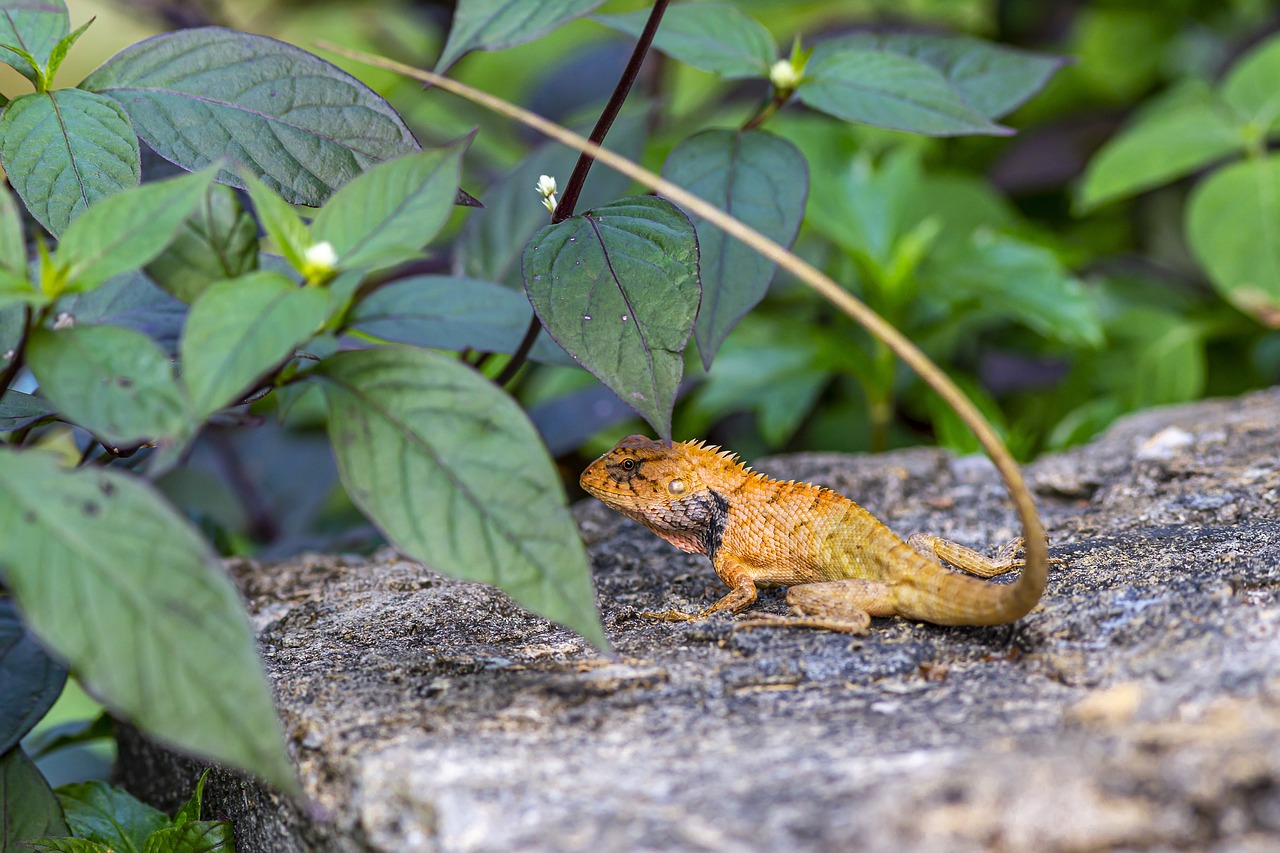Oriental Garden Lizard (Calotes versicolor)
The Oriental Garden Lizard, scientifically known as Calotes versicolor, is a common agamid lizard found across South and Southeast Asia. It is well known for its ability to change color, its territorial nature, and its distinct head-bobbing display during mating or defense.
Physical Description
- Size:
- Total length: 25–35 cm (10–14 inches), including the tail.
- Body length: Around 10 cm (4 inches).
- Coloration:
- Typically brownish, gray, or olive-green for camouflage.
- Males turn bright orange, red, or yellow on the head and throat during mating season.
- Dark bands may appear on the body and tail.
- Body Features:
- Slender body with a long, tapering tail.
- Small, pointed spines run from the head down the neck and along the back.
- Strong limbs with sharp claws, adapted for climbing.
- Lifespan: Around 5–7 years in the wild.
Habitat & Distribution
- Native to:
- Found in India, Sri Lanka, Nepal, Bangladesh, Myanmar, Thailand, Cambodia, Laos, Vietnam, Malaysia, Indonesia, and southern China.
- Preferred Habitat:
- Forests, grasslands, agricultural lands, urban gardens, and parks.
- Frequently seen in human settlements, climbing trees, walls, and fences.
Behavior & Diet
- Diet:
- Primarily insectivorous, feeding on ants, beetles, grasshoppers, crickets, caterpillars, and termites.
- Occasionally eats small lizards, frogs, bird eggs, and even plant material.
- Hunting Strategy:
- Uses its sharp eyesight to detect prey from a distance.
- Moves slowly and strikes with speed and accuracy.
- Daily Activity:
- Diurnal (active during the day), spending time basking, hunting, and defending territory.
- Often seen perched on tree trunks, walls, or rocks.
- Territorial Behavior:
- Males defend their territory by bobbing their heads, flaring their throats, and sometimes engaging in fights.
- Color change is also used to signal dominance.
- Defense Mechanisms:
- Camouflage helps it blend into its surroundings.
- When threatened, it may inflate its body, darken its color, and open its mouth aggressively.
- Fast runner and can climb quickly to escape predators.
Reproduction & Lifecycle
- Mating Season: Typically during the warm months (spring to early summer).
- Courtship:
- Males develop bright red/orange heads and throats.
- Perform head-bobbing and push-ups to attract females.
- Eggs:
- Females lay 10–20 eggs in soft soil or sand.
- Incubation takes about 6–8 weeks.
- Hatchlings:
- Young lizards look like miniature adults, about 5 cm (2 inches) long.
- Highly vulnerable to predators like snakes, birds, and larger lizards.
Threats & Conservation
- Threats:
- Habitat destruction due to urbanization and agriculture.
- Predation by birds, snakes, and domestic cats.
- Conservation Status:
- Listed as “Least Concern” (LC) by the IUCN, as it remains abundant and widely distributed.
Interesting Facts
- Can change color, but not as dramatically as chameleons.
- Also called “Changeable Lizard” because of its ability to alter its shade.
- Males turn bright red during the breeding season, earning them the nickname “Bloodsucker Lizard” (though they don’t actually suck blood!).
- Can detach its tail if grabbed by a predator, though this is rare compared to geckos.
Summary
The Oriental Garden Lizard (Calotes versicolor) is a color-changing, insect-eating, arboreal reptile found across Asia. It thrives in gardens, forests, and urban areas, where it hunts insects and small animals. Known for its territorial head-bobbing displays, this adaptable species remains abundant despite habitat changes.
Visited 92 times, 3 visit(s) today
Views: 326
Subscribe to the newsletter:
